If you’ve been paying any amount of attention to homesteading circles lately, you’ve probably noticed one topic coming up more and more often concerning poultry. Ducks are back, and in a big way. Well, ducks never left us, not really, but they’ve long been overshadowed by chickens in the United States.
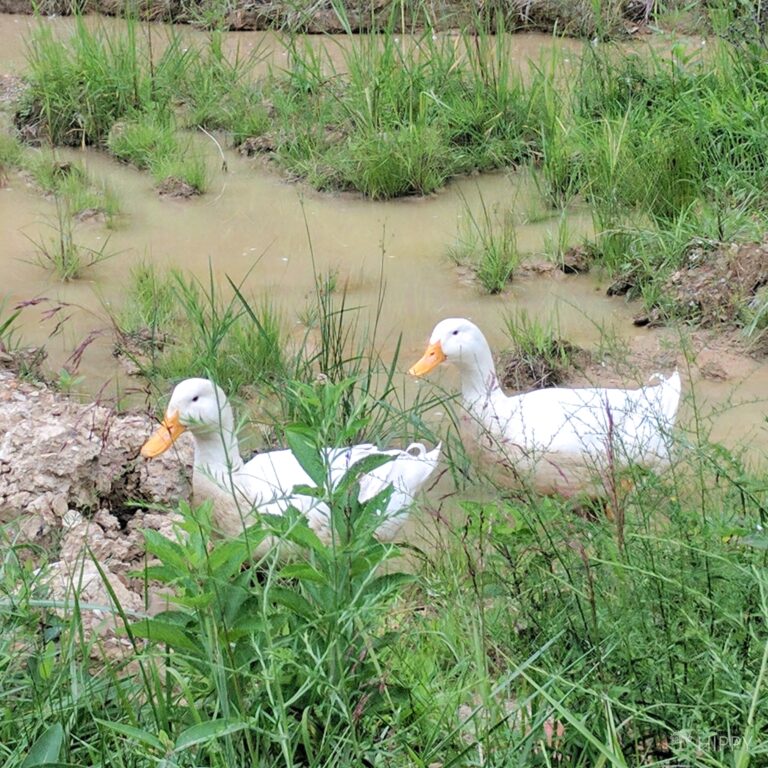
I don’t think they’re going to dislodge chickens anytime soon when it comes to the bird of choice, but I know for a fact that ducks are gaining a lot of headway with homesteaders and small-scale operations. They’re extremely healthy, still highly productive, and in many ways easier to take care of than chickens.
If you’ve been thinking about taking the plunge with ducks, you’re in luck because I’m bringing you a quick top 20 for the very best domestic breeds you should consider.
Pekin
The Pekin duck has the distinction of being the single most popular domestic bird in the United States. Or I should say, the most popular domestic waterfowl breed!
These are big and beefy ducks, and they’re commonly raised for both their meat and eggs thanks to their superb carcass yield and extraordinarily good output. A healthy female will lay between 200 and 300 eggs a year, and they are very easy to handle, making collection a snap.
Originally developed in the United States from a variety of Asian breeds that have since been lost to history, Pekins have been continually selected for productivity in size but also temperament.
Today these ducks are calm, friendly, and quite docile, and they are a wonderful choice for beginners. You can also get them anywhere and they are quite cheap!
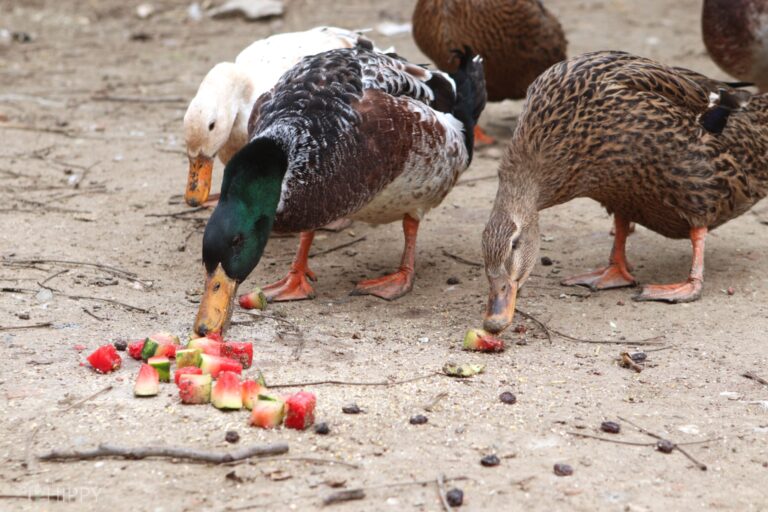
Mallard
It’s hard to think of a duck that is more important and more recognizable than the mallard. Even if you don’t know a thing about ducks, I guarantee you know what a mallard looks like. Those earth-tone body feathers and green heads are unforgettable!
But mallards are important domestic birds for other reasons, not the least of which is that most other backyard breeds have descended directly from them in one way or another.
Domestic Mallards are distinct from wild mallards, but it’s difficult to tell them apart unless you are an expert. In any case, these ducks are tiny, rarely weighing more than three and a half pounds.
They are known for rich, succulent meat and modest egg production, the females laying between 125 and 150 a year. Among domestic breeds, they’re one of the healthiest and highly resistant to disease.
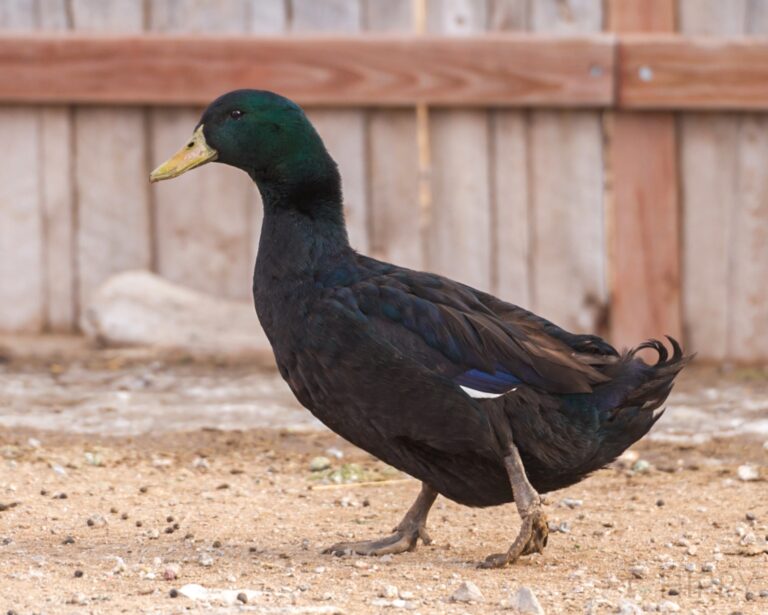
Cayuga
Arguably one of the most beautiful ducks in the world, the shimmering blue-green feathers of the Cayuga is instantly recognizable.
This is another dual-purpose breed, and a healthy hen can provide you with about 150 each year. Notably, their eggs start coming out as an inky black color and then they lighten in time to shades of blue, gray, and eventually a dusty white.
They’re known to be easy to handle, and one of the best breeds for enduring very cold weather. Most ducks do just fine even in the most frigid conditions, but Cayugas take it to a new level. A truly beautiful and multi-purpose domestic breed that’s been loved for generations…
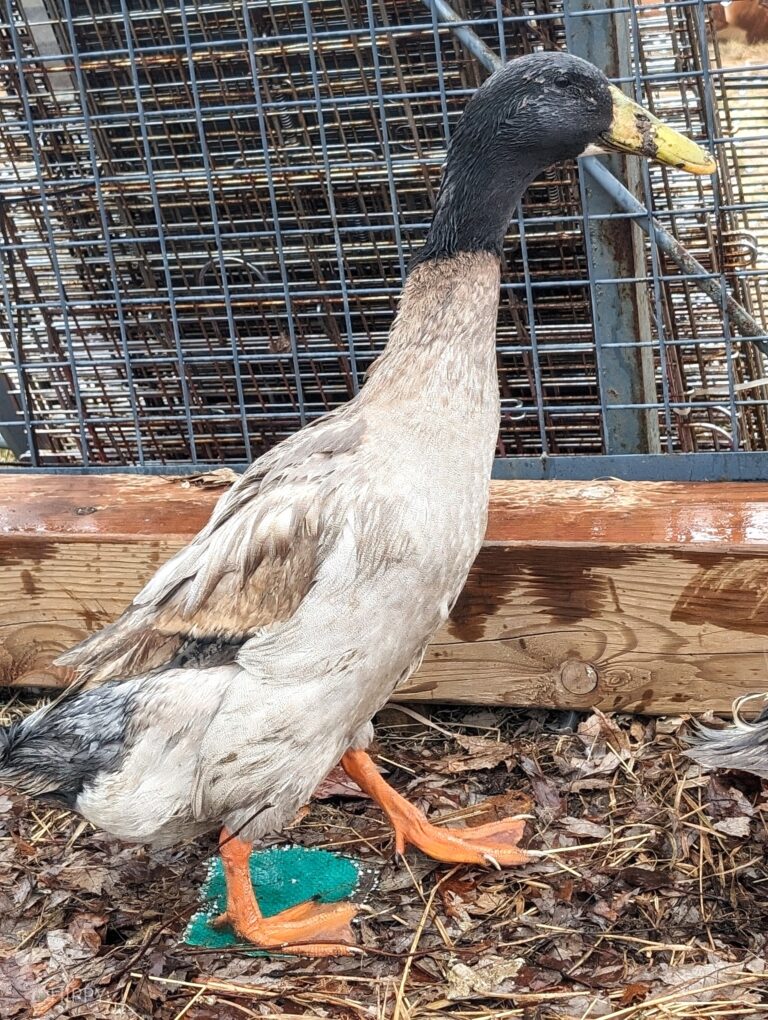
Indian Runner
One of the cutest and coolest ducks on our list, Indian Runners are instantly recognizable because of their tall, upright body plan. They look at all the world like they’re standing up on the tips of their toes.
Flightless like most domestic breeds, they nonetheless have a remarkable ground speed; in case their name didn’t tip you off, they really do run everywhere and are quite fast!
They make interesting and entertaining pets, and that’s reason enough to keep them for some homesteaders, along with their friendly nature. But they also happen to be pretty capable layers though their eggs tend to be quite small.
You can expect anywhere from 200 to 250 eggs yearly. The only downside is that they need a lot more room than most other ducks so they can get plenty of exercise; this is a high-energy breed!
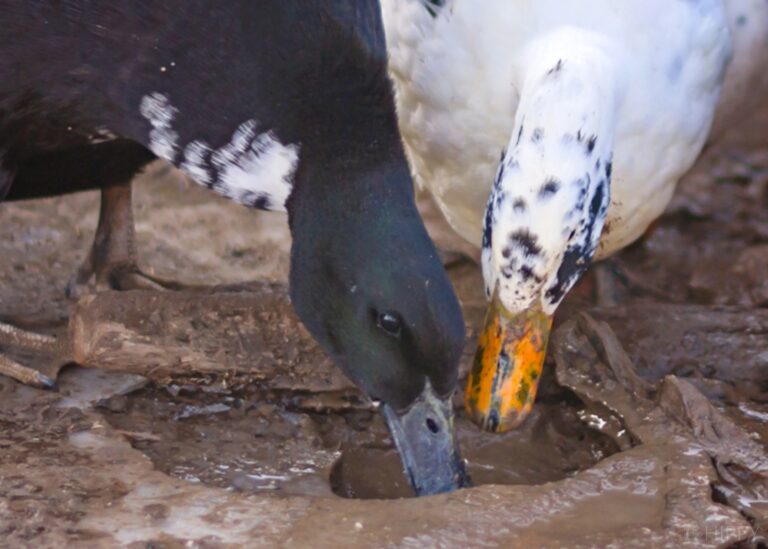
Ancona
If you were going to pick one domestic duck breed sight unseen that could do everything you wanted it to do, you could do a whole lot worse than the Ancona.
Anconas are a true multi-purpose duck, yielding ample amounts of tender, tasty meat that is notable for being particularly lean and lacking the gamey flavor that is often associated with waterfowl. They also tend to be superb layers, with healthy females cranking out between 200 and 300 eggs per year.
These are smaller ducks, and accordingly give smaller eggs, but it makes them easy to handle as long as they are used to you. Just take care that you give them lots of attention while they’re growing up, otherwise they tend to stay well away from people and other animals.
Hook Bill
A truly ancient heritage breed, one that has been around since at least the 1600s and almost certainly a long time before that, this duck is instantly recognizable for its downward-sloping and gently curving bill, hence the name.
Often said to be related to the Indian Runner seen elsewhere on our list, this link has not been verified by poultry geneticists.
A small breed that is a remarkably good hunter, a popular exhibition bird, and a decent if inconsistent layer, these birds are gorgeous and make good pets as long as they are raised with plenty of interaction.
You can expect a healthy Hook Bill female to give you anywhere from 100 to 225 pale white or blue-green eggs yearly. That’s a big range, I know, but that’s just the nature of the beast, or rather bird!
If you want a truly unique duck, the Hook Bill is a wonderful choice that can still serve a utilitarian purpose.
Magpie
Magpies are gorgeous and photogenic ducks, possessing a stark coat of black and white feathers that makes them look very much like the corvid of the same name, though they are not related of course.
Originally developed for dependable egg production, averaging between 150 and 200 eggs per year, they’ve since evolved into a multipurpose breed.
Today, Magpies are just as likely to be kept for their meat as they are for a pet or fancy duck, and their sheer beauty and engaging personalities make them very popular at poultry shows.
Even though they’re known as a pet breed, you must give them plenty of interaction and positive reinforcement while they are ducklings: left to their own devices, they sometimes become nervous and shy of people, and they can be flighty, so wing clipping might be necessary!
Khaki Campbell
Seasoned duck keepers know Khaki Campbells are one of the most well-regarded domestic breeds on earth, and the single best egg layer when it comes to sheer output.
They’re so good they can meet and beat the productivity of many chickens! That’s something you don’t see every day.
A healthy Campbell hen will produce no less than 300 eggs a year in her prime, and most can crank out anywhere from 325 to 350. Hard to believe, but I promise you it’s true! More than that, they make a truly wonderful family duck, and they’re known to be sweet-natured, patient, and calm.
They’re very tolerant of handling and touching, and this makes them a great choice for interacting with kids- and nervous first-time adults! If eggs are what you are after, the Khaki Campbell should be at the top of your list.
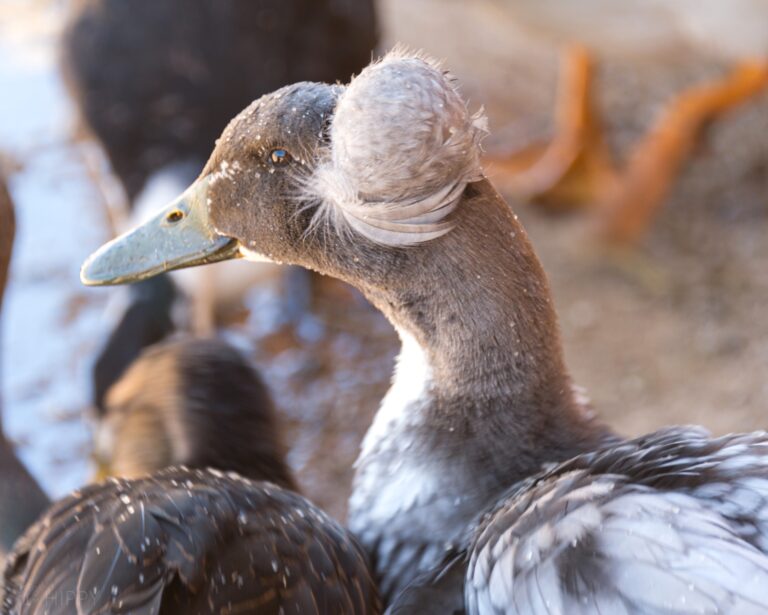
Swedish Blue
The Swedish Blue has long been a powerhouse utility breed in Europe, but in recent years it is gaining steam in the United States thanks to recognition of its better qualities.
This is another spunky, athletic, and outgoing duck that loves to roam and forage, and if you have a large, lush parcel for them to explore they will find most of their own food. They especially love insects, slugs, and other creepy crawlies.
Of average size, they are dependable but not exceptional in other regards, laying anywhere from 125 to 150 eggs a year and producing a pretty good yield of meat.
They are, though, notable for being an exceptionally good roaster duck; if you want a proper duck dinner for a gathering or special occasion, you’ll find that Swedish Blues are excellent, especially because they grow so quickly.
Golden Cascade
The Golden Cascade, sometimes called simply the Golden, is often confused for the Buff Orpington or other ducks with a buff coloration. But don’t be mistaken, this is a distinct breed, and a dual-purpose one at that.
The Golden Cascade is another wonderful all-rounder that’s easy to handle, remarkably healthy, quick-growing, and highly productive in terms of eggs and meat.
You can expect around 200 eggs a year, sometimes a bit less depending on the individual hen, and a good yield since they average about 8 pounds of weight.
Even better, they are fit for slaughter at just 8 to 10 weeks old. These ducks are also notable since they can produce auto-sexing ducklings in some cases; you’ll be able to tell the drakes from the hens at birth!
Saxony
The gorgeous and even imperious Saxony duck is known for its regal tan and stone-gray or blue coloration. They are a heritage dual-purpose breed that’s been around for quite a while, and they are especially popular in the UK and throughout Europe though less common in the US.
Calm, stoic, and tolerant of confinement, they make a good choice for smaller properties or other cramped conditions. They show notably good weight gain from relatively little food and their meat is especially good quality.
About egg output, they don’t compete with some other breeds on our list, but you’ll still get plenty… Females lay anywhere from 150 to 175 eggs per year, but they are noted for having a short laying season, so don’t expect them year-round.
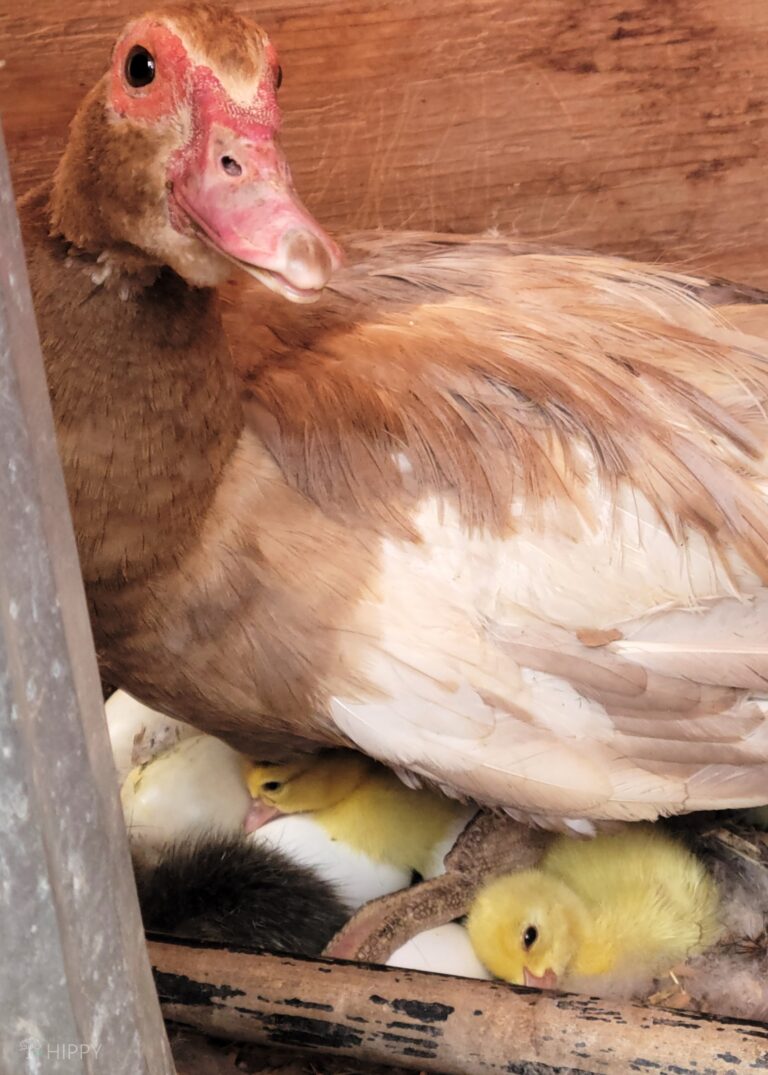
Muscovy
Muscovies are among the largest domestic duck breeds out there, and, fun fact, they aren’t really ducks but rather a type of goose. But nonetheless, they’ve long been considered a domestic breed, and so here they are.
You can instantly recognize these birds by their sheer physical size, sometimes reaching 15 pounds, bright red flesh on their faces and necks, and the long nails on their feet that are more like proper talons!
They’re also notable for being extremely quiet and spending most of their time out of the water. Their meat is a delicacy and is enjoyed in high-end restaurants around the world.
Silver Appleyard
Friendly, active, curious, and superb foragers, the Silver Appleyard is a duck that is most at home when it is roaming and looking for something tasty to eat.
They’re also noteworthy for their gorgeous plumage, consisting of shimmery silver bands and bright white patches. These birds are unforgettable, and also highly productive!
Another true dual-purpose duck, you can get lots of meat or eggs at your pleasure. Adults max out at around 8 pounds and produce notably little waste compared to the carcass yield of good meat.
Healthy, happy hens can be expected to lay anywhere from 200 to 250 eggs each and every year. This breed is present throughout the United States, but less common, so be prepared to look a little harder to find them.
Buff Orpington
At first glance, you might think that a chicken has wound up on our list by mistake, but that isn’t the case. There is a domestic duck breed of the exact same name!
It turns out they share the name for a reason because they have many of the same characteristics, including an amazingly calm and friendly temperament, and also high egg output.
If you want a sweet, friendly egg-laying flock that is easy to handle and will always look forward to getting some interaction and treats from you, Buff Orpingtons are downright excellent.
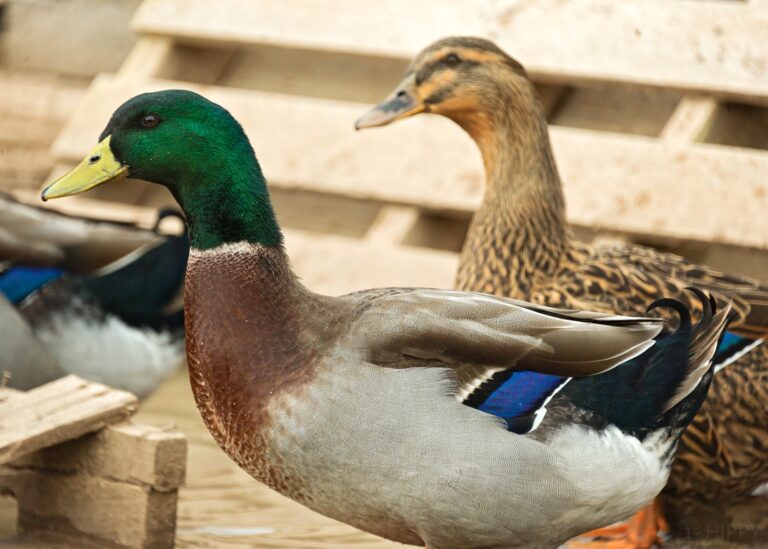
Rouen
Yet another impressively big bird on our list, Rouens are tall and heavy, with mature males tipping the scales at about 12 pounds.
They are most popularly kept as show birds thanks to their good looks and imposing size, but they make a remarkably good dual-use bird, too: hens are decent layers, but quite variable, laying anywhere from 65 to 150 eggs, or slightly more, a year.
Their meat is also notable for its tenderness, excellent marbling, and delicate flavor, and some chefs prefer their meat above all others for its versatility and consistent flavor. They’re bound to be a table bird that your whole family can enjoy.
Aylesbury
Heavy and stout, the Aylesbury is a big-bodied duck that has been raised for its high quality, and high-yield, meat for ages.
Typically, duck is an acquired taste, but Aylesburys are said to be something truly sublime, with a delicate, rich, and savory flavor that is difficult to describe. Originally hailing from the UK, they are quite rare in the United States but gaining in popularity.
And though they’re most popularly known for their meat, they are also surprisingly capable layers, with younger hens laying around 100, perhaps 120, eggs a year. A small flock is more than capable of keeping a family’s refrigerator fully stocked.
Call
Call ducks are a tiny bantam variety known for their charming good looks and propensity to make noise or call out to other ducks.
That’s how they got their name: Hunters originally used them to call in their prey, shooting them down when they came to investigate the tethered call duck. But don’t worry; we aren’t using them for that!
Call ducks make adorable pets and provide plenty of entertainment because they are so active and love to hunt and investigate. They are too small to provide much meat and they don’t lay many eggs, so this is a breed that is purely kept for the fun factor.
But be warned, they are among the loudest and most vocal ducks, and they tend to make noise all through the night! As long as they aren’t too close to your house, though, that shouldn’t be a problem.
Bali
Balis are a variety of crested ducks, and you’ll sometimes see them referred to as Indonesian Cresteds. They have a large, elegant spray of feathers on the top of their heads and this lends them a unique look that is instantly recognizable.
But these ducks aren’t just about fashion. Females are good layers and mothers, but aren’t known to be particularly broody, meaning you’ll get plenty of eggs if you want them, and you can still rely on her to expand your flock when needed.
They also happen to be remarkably good foragers like some of the more active breeds on our list, and if you have a large or bountiful homestead, they can supply much of their own food.
Abacot Ranger
The Abacot Ranger has the distinction of being a domestic breed that was produced, first and foremost, as a pet. They have a mottled brown, tan, white, and olive coloration that’s undeniably attractive, and they are among the sweetest, friendliest, and most affectionate ducks around.
But they aren’t just companions, and over time, folks began to recognize their utility value. Females lay lots of large, dense eggs, averaging anywhere from 175 to 200 a year.
The trouble is, keeping them at that high level is challenging because they tend to be quite broody, but they are good mothers, and a great way to expand your flock the old-fashioned way.
Welsh Harlequin
If you want to raise a beautiful flock and expand it the old-fashioned way, meaning let your hens do the hatching and raising of the babies, the Welsh Harlequin might be the ideal duck, and will gift you with tons of eggs in the bargain.
The only downside is that they’re highly endangered, and you’ll have to look hard and pay a lot more for the privilege of owning them.
A medium-sized duck that rarely grows larger than 6 pounds, in the right conditions they can lay more than 225 eggs per year and even have a surprisingly good yield of meat for their small size.
But, Harlequin moms are dedicated and diligent, and intent on hatching every clutch of eggs that they can. Once they go broody, you won’t get any more eggs, but you’ll soon have a gaggle of adorable ducklings to add to your flock. This makes them a great choice for breeders, naturally.
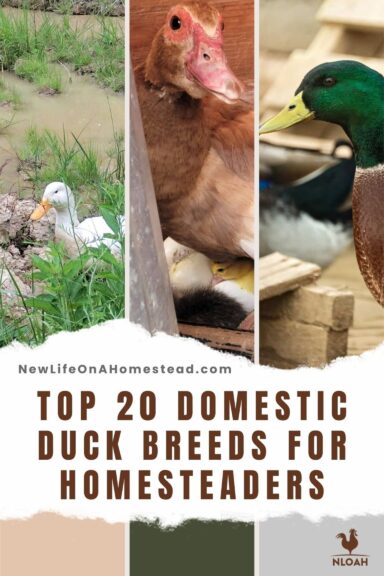
Tim is a farm boy with vast experience on homesteads, and with survival and prepping. He lives a self-reliant lifestyle along with his aging mother in a quiet and very conservative little town in Ohio. He teaches folks about security, prepping and self-sufficiency not just through his witty writing, but also in person.
Find out more about Tim and the rest of the crew here.
